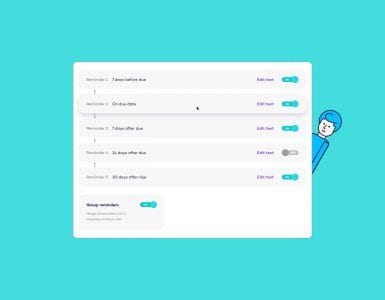Whether you own a small local business, a fresh online startup, or an already recognised business, your role is to continuously improve your performance and grow your profits. As your business grows bigger, the operations you have to make also become more numerous and complex.
At one point or another, you’ll absolutely need to consider allowing other professionals to contribute and help with the achievement of your company’s goals. A great practice for standing out of the crowd is hiring various digital freelancers for various purposes. These individuals can to be much more effective than the traditional employees due to their different mindsets and work ethics.
In today’s post, we’re going to explore several tips and tricks that’ll help you grow your business performance by taking advantage of professional digital workers. Pay attention and try to take action on what you learn!
1. Properly Define Your Project
Before you put money in somebody else’s pockets, you need to establish the exact reason for your investment. Investing your budget in freelance workers is often a challenging bet, as you never know whether the results you’ll get will be satisfying.
In order to improve the effectiveness of your outsourcing investments, you need to properly define several things:
- Is it the proper time to hire freelancers?
- What will the freelancer have to do? E.g. Design a landing page
- What are the measurable results that you’re seeking? E.g. More traffic to website
- What are the freelancer’s responsibilities, deadlines, and work conditions?
- Is the project short or long term?
- Are you paying your freelancer on an hourly basis or on a project-basis?
- Do you expect frequent communication, reports, and updates?
You can go on and define your project even further. By gathering all the necessary details before even searching for your freelancers, you’ll be able to explain your project better. Moreover, you’ll also target the right people for the job, an aspect that will save you a lot of time and money along the way.
![]()
2. Decide the Budget
Once you’ve established what your project is about, you need to carefully decide the budget you’re allocating for your project. Unless you have already built strong relationships with one or more freelancers, relationships which based on trust and value, I’d suggest you avoid spending most of your money on outsourcing due to the often high risks.
So if your company’s monthly spending budget is $1000, it’s better to spend only 30% to 50% on your outsourcing. Leave the rest for your other operations and consolidate the process in time. No matter what, decide your budget before you actually start paying.
Building a small business website, for example, will take you (as a complete newbie) an average of a few days to finish. This includes learning all the basics and applying step-by-step directions from online tutorials.
Try to count the time and energy you’re spending on the task and start evaluating…if you had hired a freelancer for $300, how would your ROI (return on investment) look? Could you have used those few days on something that would generate more than $300? If the answer is yes, you should outsource. If not, you should pay with your time instead of your money.
3. Develop a Solid Interview to Hire Only the Right People
The whole point of hiring other people is to grow your company’s performance and improve the long-term results. Well, in order for that to happen, you need to hire only the right people.
Ideally, you should look for freelancers that are passionate, talented, results-oriented, communicative, and reliable. Obviously, finding amazing outsourcing power is harder than it seems, and that’s exactly why you’ll need to develop a solid interview that’ll filter your prospects in such a way that you’ll find the best people for your own company.
For example, when I was looking for the best paper writing service in the local marketplace, I asked all companies and individual freelancers to provide a 200 words sample of their best work. I promised to pay for each sample, so my job posting soon became popular. I ended up paying an average of $100 for about 25 samples. Out of the 25 samples, 2 were spectacular and so I found my first two talented workers.


4. Establish The Communication Channels and Frequency
A great client-to-client relationship is often the result of a collaboration based on value, respect, and trust. However, in order for that relationship to form in the first place, both you and your freelancers need to be able to communicate with each other with much ease.
You need to establish the communication channels. E-mail, Skype, WhatsApp, phone calls, an inbound communication software…choose yours and let all your future freelancers know the rules of communication. Moreover, if you need frequent updates, make sure you let your workforce understand that right from the start.
5. Measure the Results, Provide Feedback, and Optimise Consistently
Once your freelancer has started working, it’s time to start measuring the results. You need to pay attention to the effects that your freelancer’s work is producing and see whether your money is well spent or they need to head in a different direction.
Once you get the first results, you should provide the necessary feedback along with suggestions. Let your workforce know what they did wrong and what they should change. Optimise your strategies too, as they might be the cause of your failures and not your team members. Measure and optimise consistently and your collaboration proficiency will improve!
Takeaways
Rewriting your business by building a professional team of freelancers is one of the most effective ways of stepping up your business game forever. You’ll gain a lot of power and traction, which means that you’ll be able to win more revenues. Then, you can invest even further and step up your game again and again until you turn your business into a multimillion company. Good luck!








